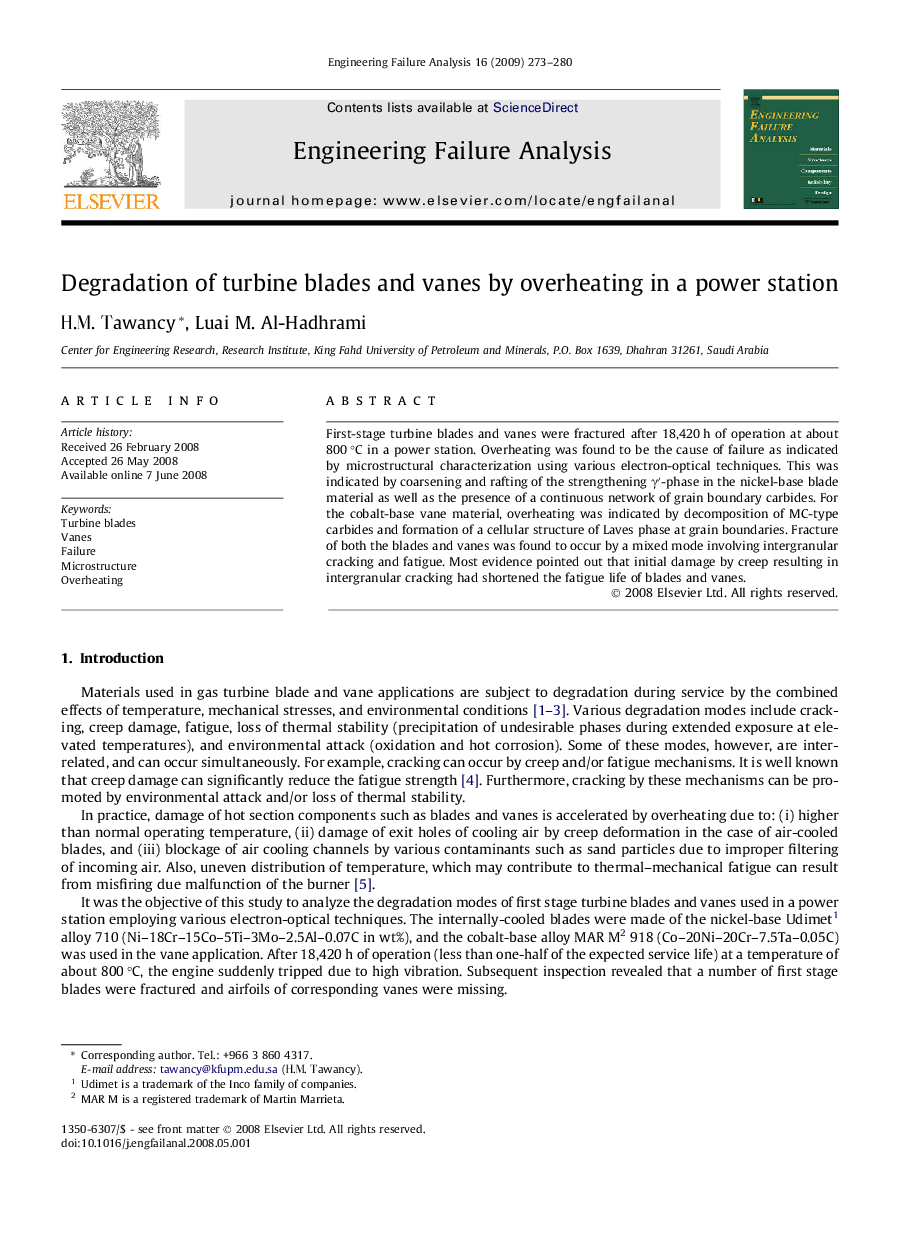| Article ID | Journal | Published Year | Pages | File Type |
|---|---|---|---|---|
| 770052 | Engineering Failure Analysis | 2009 | 8 Pages |
First-stage turbine blades and vanes were fractured after 18,420 h of operation at about 800 °C in a power station. Overheating was found to be the cause of failure as indicated by microstructural characterization using various electron-optical techniques. This was indicated by coarsening and rafting of the strengthening γ′-phase in the nickel-base blade material as well as the presence of a continuous network of grain boundary carbides. For the cobalt-base vane material, overheating was indicated by decomposition of MC-type carbides and formation of a cellular structure of Laves phase at grain boundaries. Fracture of both the blades and vanes was found to occur by a mixed mode involving intergranular cracking and fatigue. Most evidence pointed out that initial damage by creep resulting in intergranular cracking had shortened the fatigue life of blades and vanes.
